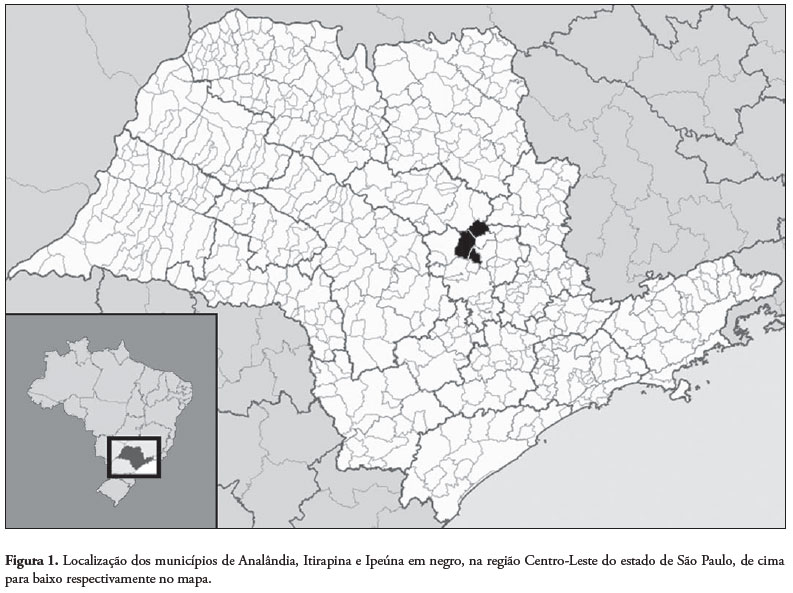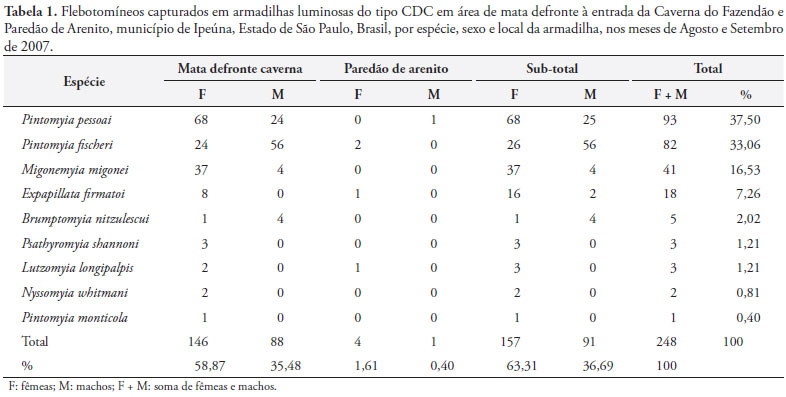Cutaneous (LTA) and Visceral (LVA) American Leishmaniasis incidences are increasing in human and canine hosts, especially LVA, which is expanding its range through São Paulo State. Distribution and ecology knowledge of different sand fly species is essential for leishmaniasis epidemiology vigilance. The communication of new findings of its vectors is mandatory for risk determination for transmission of these illnesses. On this study sand flies were trapped in bushed areas, in different localities at rural areas of Ipeúna, Itirapina and Analândia counties, between August and September 2007. A total of 248 specimens of nine different species were sampled in Ipeúna, six and seven specimens of two different species were trapped in Itirapina and Analândia, respectively. The most abundant species in Ipeúna was Pintomyia pessoai (37.5%), followed by Pintomyia fischeri (33.06%) and Migonemyia migonei (16.53%), all three species are considered vectors of LTA in São Paulo State. Lutzomyia longipalpis was found in Ipeúna and Analândia for the first time and its presence confirmed in Itirapina, indicating a risk of LVA essablishment in the area and the need for further local studies on its ecology, especially regarding its occupation of the anthropic environment.
leishmaniasis vector; epidemiology; transmission; zoonosis; sand flies





